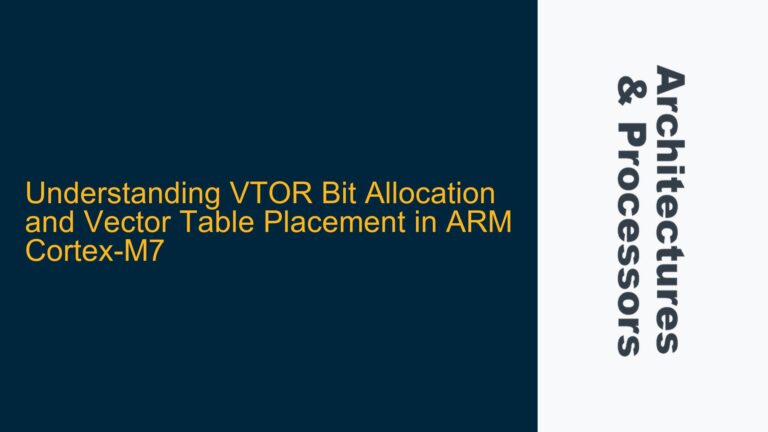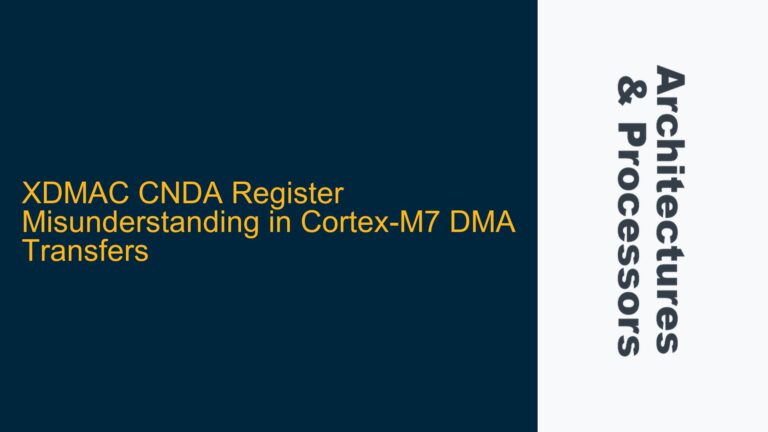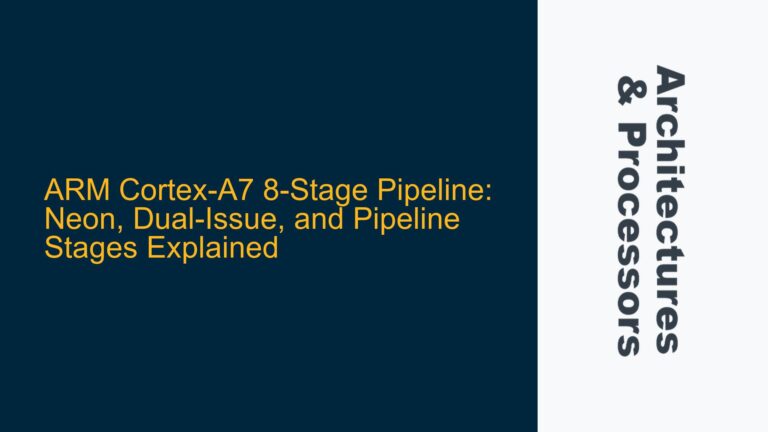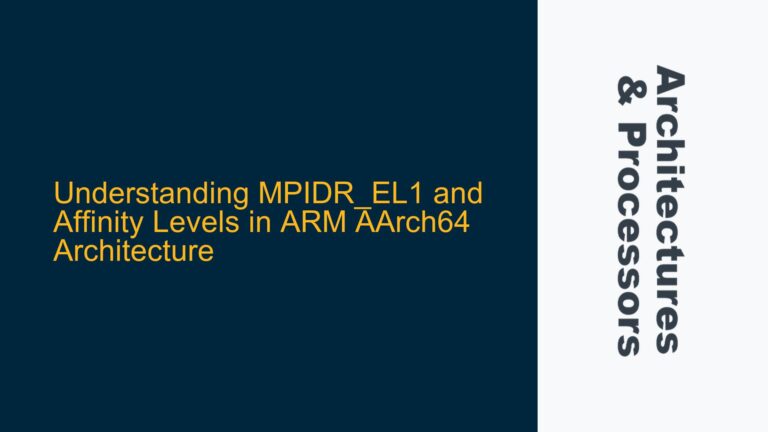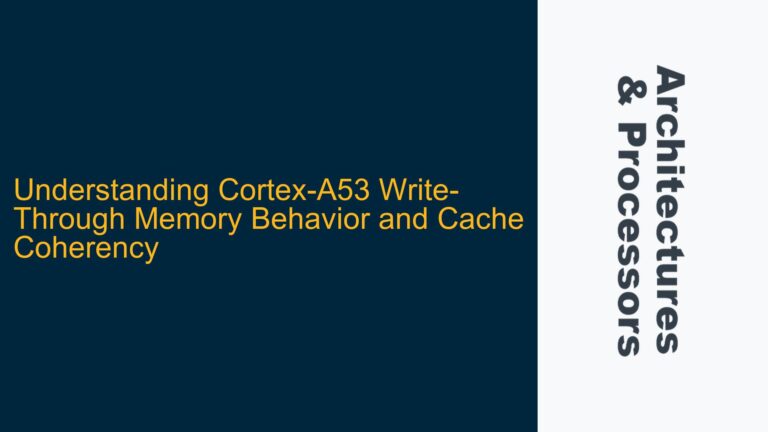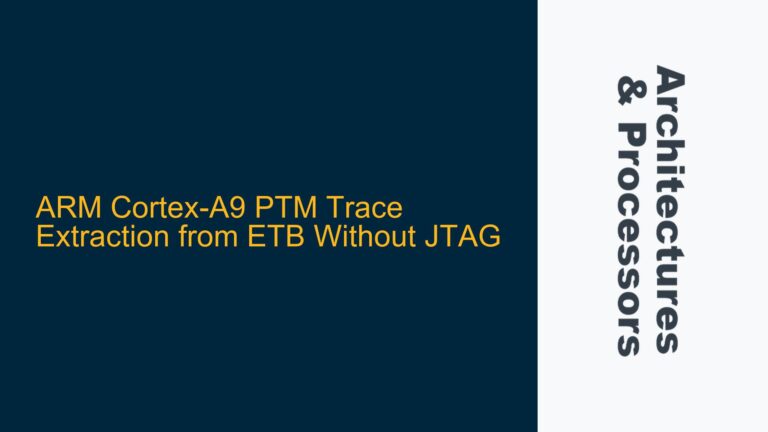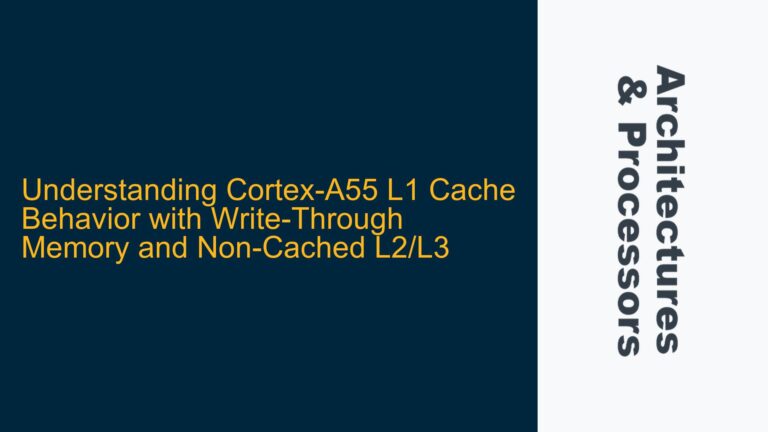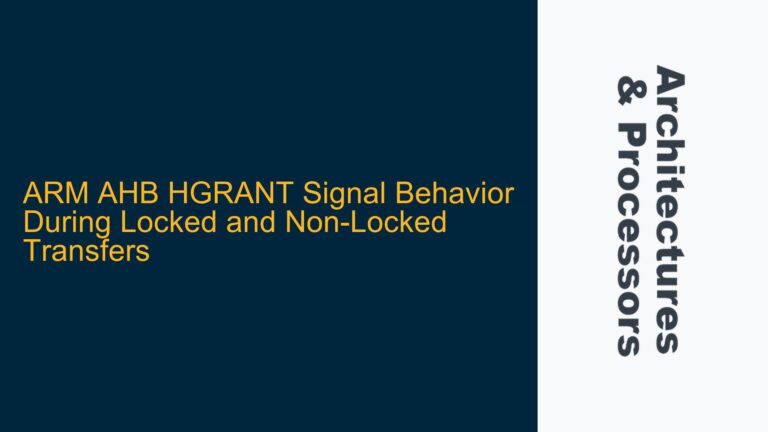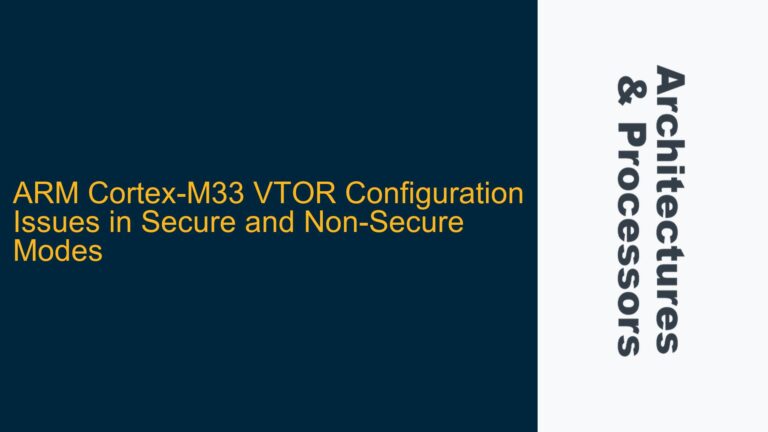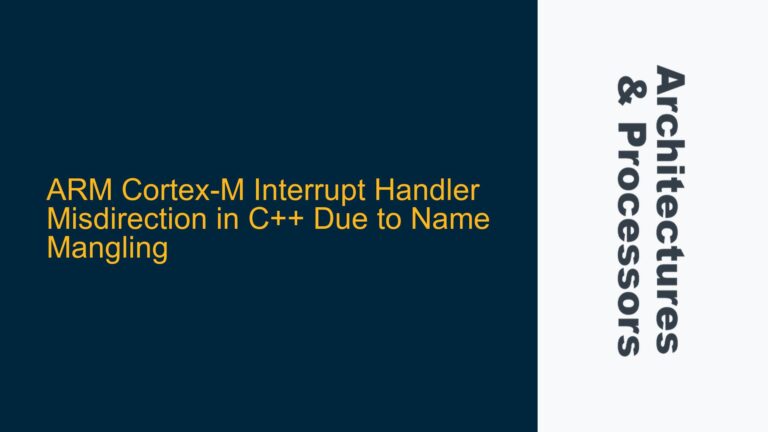VTOR Bit Allocation and Vector Table Placement in ARM Cortex-M7
VTOR Bit Allocation and Vector Table Address Constraints in Cortex-M7 The Vector Table Offset Register (VTOR) in ARM Cortex-M7 processors plays a critical role in defining the starting address of the vector table, which contains the initial stack pointer value and the exception handlers’ addresses. The VTOR register allows the vector table to be relocated…
